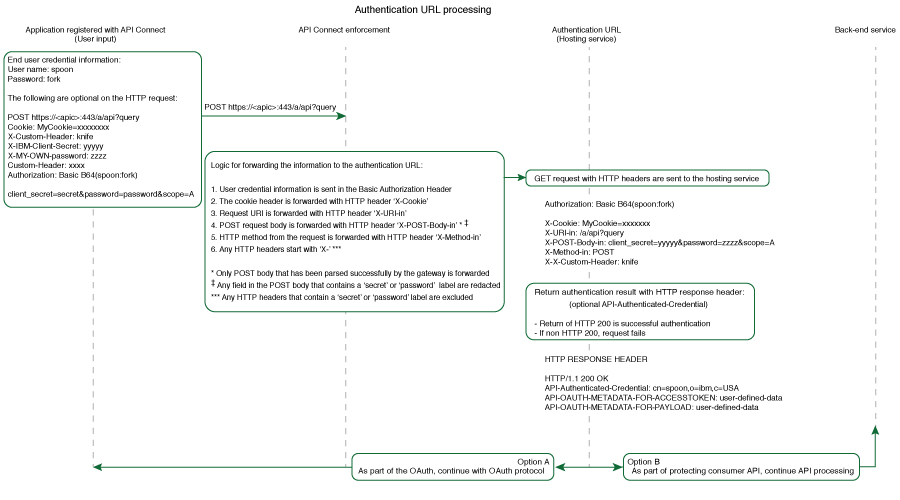Authentication URL
You can use an Authentication URL to specify a REST authentication service that manages user authentication, and optionally provide additional meta data to be embedded in the token.
This support can optionally enable any of the following:
- Provide the authenticated credential to API Connect. For example,
the user logs-in with user name: spoon, and password:
passw0rd. When the user is authenticated, the credential becomes
cn=spoon,o=eatery. The credential is kept in the OAuth access_token to represent the user. - Provide metadata support. Allow extra metadata to be kept in the
access_token. ![[V5.0.7 or later]](../buildfiles/icon_v507.jpg) Override the
Override the scopethat the application receives after a successful OAuth protocol processing. By responding with a specific header, the Authentication URL endpoint can replace thescopevalue that the application receives. For example, you can provide a specific resource owner an account number within thescopeheader response for use in future processing steps.
When you call the Authentication URL, the API Connect gateway sends a GET request with HTTP headers and then processes any HTTP response from the URL. For authentication, a REST authentication service is expected at the Authentication URL.
The following response from the REST authentication service indicates that user authentication is
successful and that API Connect will
use
cn=spoon,o=eatery as the user
identity.HTTP/1.1 200 OK
Server: example.org
API-Authenticated-Credential: cn=spoon,o=eatery
API Connect considers any non-200 HTTP response code a failed user authentication attempt.
API-OAUTH-METADATA-FOR-ACCESSTOKEN
API-OAUTH-METADATA-FOR-PAYLOADscope from the application. For more
information, see OAuth scope. The response
header is: x-selected-scope